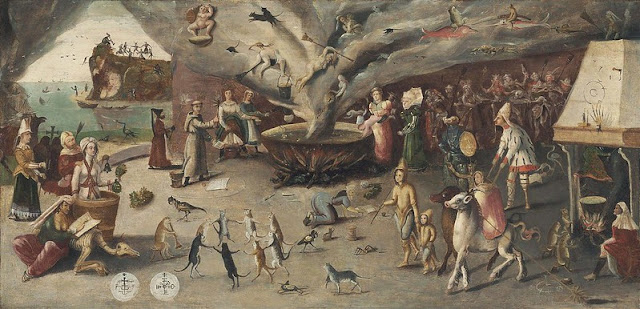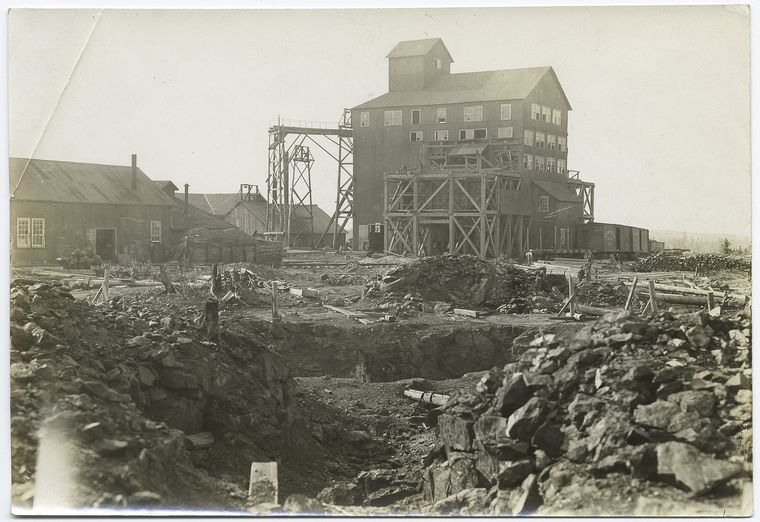One of the great charms of old houses is that the many occupants it sees during its long history leave behind many varied and interesting stories. The Stockton home in Richmond, Kentucky, is no exception.
The large, white, three-story house was built in 1880 by pharmacist Robert C. Stockton. It remained in the family until 1937, when Stockton family history took a tragic turn. The home's owner at that time was Edward Stockton, son of the man who built it. After his pharmacy business was ruined by the Great Depression, Edward sought an end to his troubles by taking poison. His death and funeral both took place in the family home.
After Edward Stockton's suicide, the home was occupied by various families. None of them reported anything unusual until June 1983, when the house was bought by David M. Jones and his wife. Mr. Jones was an attorney and Mrs. Jones was, coincidentally enough, a pharmacist. If one is a believer in Fate, synchronicity--or perhaps just a cosmic bond between druggists--this might help explain what came next.
A few days after the Joneses moved in, a picture in the dining room suddenly and inexplicably came loose from its nail and crashed to the floor. Then, a lamp in the front hallway began going on and off on its own. When the couple replaced it with a new lamp, the same thing happened.
On the night of July 19, 1983, things really began to get weird. At about 2:20 a.m., Mr. Jones suddenly awakened to a most disconcerting sight: a woman was standing at the foot of the bed. He later said, "It was just like what you would envision a ghost to look like. She was dressed in layers and layers, vapory, flowing. It was not really something physical, but more like an image." The apparition had blond shoulder-length hair, sunken eyes with blackish-blue eyelids, and deep half-moon creases about the mouth. "You could tell she was very upset," he added.
I would bet that Mr. Jones was, as well.
The being began to speak to him, in a voice that was deep and coarse and "wasn't human." All he could make out from what she said were the words "picture" and "funeral." Then the spirit vanished.
The next morning, the couple found that baskets that had been hanging in the kitchen were now scattered over the floor. This postscript to Mr. Jones' uncanny encounter emboldened him to tell his wife of what he had experienced. Mrs. Jones, probably thinking her husband was in need of one of her prescriptions, treated his story with skepticism.
She did not remain a doubter for long. Not long afterward, Mr. Jones began to clear out a small attic-like room on the third floor. It was full of old papers, boxes, and knick-knacks--the sort of relics that any old house inevitably accumulates. And then he came across an oil painting dated "January 27, 1891." It was a portrait of an old woman, dressed in mourning.
The old woman who had appeared by his bed.
Mr. Jones took the painting to a psychic, who confirmed that yes indeed, this was a portrait of his ghost, who was probably lingering in the home because of the death of some loved one. After doing some research, Mr. Jones surmised that the ghost was Mary Catherine, wife of Edward Dorsey Stockton, who died in 1891. Mary Catherine passed away in 1898, at the age of 69. On the psychic's advice, the Joneses had the portrait re-framed and hung it in the dining room.
The psychic told Mr. Jones that he would probably see the ghost again around Christmas, as the spirit was fond of that holiday. The psychic advised him, "You will look into a huge mirror with a gold frame around it in the hallway, and see her sitting in the background."
The psychic was a bit off on her timeline. Mary Catherine did not make herself visible again until February 1984. One day, Mr. Jones happened to glance into the mirror in the front hallway..and, sure enough, there she was, sitting in a chair in the parlor. Some time after that, even though he was alone in the house, he felt a warm spot on the couch in the parlor, as if someone had just sat there.
Although Mr. Jones felt the ghost was friendly and harmless, he developed a distaste for being in the house alone. Oddly enough, his wife never saw any sign of the spirit. However, according to the psychic, Mary Catherine enjoyed watching Mrs. Jones in the kitchen.
On Memorial Day 1985, the Joneses visited a grave in Richmond Cemetery. As they went past the graves of the Stocktons, they noticed that the tombstone of Matthew, son of Mary Catherine, had fallen over. The next morning, a lamp in their dining room began flashing on and off in a particularly pointed manner.
By this time, Mr. Jones had become fluent in ghost-speak. He said aloud, "All right, Mrs. Stockton, I'm going to call the cemetery and have them put Matthew's tombstone back up." The lamp never flickered again.
The Stockton home was next door to the fraternity house of Tau Kappa Epsilon. Some of the members informed the Joneses that during the two years the home was empty before the couple moved in, lights could be seen periodically going on and off inside the residence. A past president of the fraternity, Todd Taylor, had briefly lived on the second floor of the Stockton home. On several occasions, he heard doors open and shut, when he knew no one else was around. He never saw Mary Catherine. However, there were times when he thought she was in his room at night, but he was too frightened to open his eyes to check. "Now, I'm not saying there is a ghost, but I'm not saying there isn't, either," he commented, adding, "there are some awfully suspicious things."
In October 1985, the "Lexington Herald Leader" did a story on the Stockton family ghost. Subsequently, a man who had lived in the house in the 1970s contacted Jones. He said he had had experiences very similar to what Mr. Jones was going through. Although the newspaper had not given any detailed description of the ghost, this caller was able to describe Mary Catherine perfectly.
A few years ago, author Keven McQueen contacted the Joneses, who confirmed to him that Mary Catherine was still one very lively spirit. Although his wife never did see the ghost, Mr. Jones would encounter her on a regular basis, developing an odd sort of fondness for his spirit houseguest. Mrs. Jones' father lived in the house with them until his death in 1989. Every now and then, he would comment, "There's a haint in this house." He refused to elaborate on this statement.
On one occasion, the Joneses were having a dinner party. As everyone sat around the table, they all were treated to the sight of drawers of a sideboard opening and closing on their own.
"Who's doing that?" one of the guests asked.
"Mrs. Stockton," came the obvious reply.
On another day, a friend was visiting the house. As she and Mr. Jones were chatting, the visitor suddenly grew pale and quiet. Jones immediately surmised that Mary Catherine was in the vicinity. The visitor admitted that she had seen a woman standing in a doorway. The ghost was all in black, with her hair in a black net. (Curiously, Mrs. Stockton had previously always worn white. Even more oddly, this guest was the only known woman to have seen the ghost. For whatever inexplicable paranormal reasons, Mary Catherine liked to show herself only to males.)
The Joneses told McQueen that the psychic who had advised them about the painting had told them that eventually they would have a son, which would greatly please Mrs. Stockton. In 1993, they were indeed blessed with a baby boy. Although they never mentioned the ghost to their son, Mary Catherine soon made herself known to him. When he was only a toddler, he would complain to his parents about the "witch" who lived at the top of the stairs.
The last time Mr. Jones saw Mary Catherine was in 1998, when she mumbled something about a fan. Just to see what would happen, he bought an old-fashioned cardboard fan and left it on a desk. The fan subsequently would vanish and reappear in odd places throughout the house.
In 2001, the Joneses moved out of the house, giving the new owner fair warning about their spectral tenant. This latest owner of the home was not a believer in ghosts. One of the first things he did was to take down the portrait of Mrs. Stockton. Soon afterward, he lost his job. His mother came to visit, and died on her first night there.
Mary Catherine was not a ghost to be crossed.









.jpg?20180305135426)








